How’s Spring?
Or as Chris Beytes called it last week, “sprwinter.” In my casual discussions with friends, we’ve determined that spring no longer exists, or makes rare appearances here in the Northeast during February for a few days and again for a day or two in late April. This weekend—which consisted of one nice day and two rainy and cold days—was followed by a one-day spring. The weather now calls for 80s or higher pretty much for the next five months.
This is all to say, this time of year formerly known as spring has become even more confusing, not only for our “when am I supposed to plant this?” consumers but also for the staff answering those questions. It’ll be 85F this first week of May in Boston, so shouldn’t we be planting tomatoes? I used to say no, but I’m not really sure anymore. You probably have the same confusion going on in your neck of the woods. (Except you, San Diego, where the weather is always 75F and gorgeous.)
So folks, I have two questions for you this week: 1) How are your spring sales going so far? And 2) What has been your plan for advising customers what to plant when? Are you sticking with the Old Farmer’s Almanac? Or have you changed your advice to jibe with this crazy-making weather? I’d love to know how you’re doing and more importantly, how you’re adjusting. Send your thoughts to ewells@ballpublishing.com.

Canadian Retailers Investigated
Speaking of (big box) garden centers not having a good start to spring, this next item comes from Jen White’s GreenTalks e-newsletter and is food for thought for anyone in the garden center biz—especially you Canadians, eh?
Things you don’t want to hear: We tested the plants in your garden center and they were positive for banned pesticides.
That’s what happened to RONA (Lowe’s), Canadian Tire and Home Depot in Ontario, Canada. But guess who did the testing? Friends of the Earth (FOE) Canada collected their own plant samples at the retailers and sent them to the University of Guelph for testing, wondering if stores were remaining truthful about phasing out neonicotinoids from the aisles. Some samples tested positive for neonicotinoid residues.
However, FOE also made a big production out of the other residues found, supposedly from pesticides that have been banned under Ontario’s Cosmetic Pesticide Ban. Yet, they do not mention that the cosmetic ban applies only to lawns, gardens, patios, parks, and school yards. Agriculture gets an exception (as do several other scenarios). To make it even stickier, they list spinosad in their complaint—a "natural" pesticide that's both organic (in some products) and on the Cosmetic Pesticide Ban list. FOE reported their findings to the Environmental Commissioner of Ontario.
I’m not a lawyer, but if you read their long-winded complaint, it seems they want to hold a retailer responsible for “permitting” a grower's application of the pesticide AND they’re trying to say that those plants ending up in a garden with residue on them means the retailer permitted the discharge of a pesticide in the landscape.
Might be a bit of a stretch. We’ll see if it goes anywhere other than the press.
But, nonetheless, it brings the pollinator and pesticide residue issue front and center just in time for spring. Best to know what you’re growing and spraying (or what you’re buying into the garden center) and communicate clearly and honestly with your customers. I’d say it’s the perfect time to think about how you want your business portrayed.

Basil Downy Mildew
Basil Downy Mildew (BDM) is out there and possibly running rampant, at least from my personal experience. I spotted it last week on all of the 4-in. basil plants in a Boston-area Whole Foods produce section (plants were supplied from Central Massachusetts). The produce guy was completely unaware! Then on a visit to my mother on Long Island this past weekend, I spotted basil downy mildew (although not as widespread) on the Bonnie Plants basil in her Home Depot (these plants were shipped down from somewhere in New England, I believe).
There’s not much that can prevent it. I recall a conversation I had a couple of years ago with my go-to disease expert, Cornell’s Margery Daughtrey, who said to try to sell it early in the season before the disease presents itself and while someone could still make use of it in the kitchen. With BDM presenting so early in the year, I’m not so sure even that advice is ok anymore!
All of this makes me more eager to try out Proven Winners’ new basil variety Amazel Basil, which they claim is resistant to BDM. We mentioned it after Day 5 of our California Spring Trials coverage but it’s worth mentioning again. If this vegetative variety is indeed resistant, it could be a game-changer for both fresh markets and for garden retail. I’m looking forward to growing it in my community garden plots, which as you know are the horticultural equivalent of highway rest stops when it comes to pests and diseases.
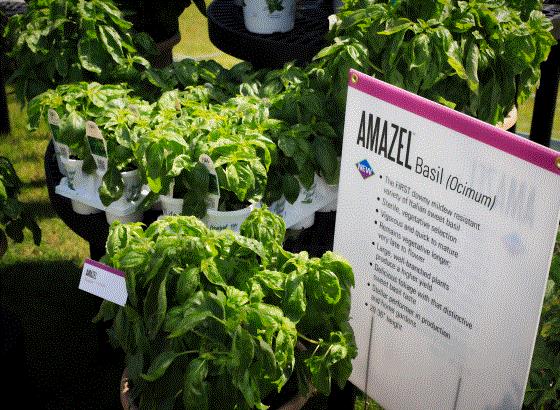
And I just heard from the aforementioned Margery concerning BDM resistance. She said that in addition to Proven Winners’ resistant Amazel, Rutgers University has released three DMR (downy mildew resistant) varieties. According to their School for Environmental and Biological Studies WEBSITE, they are as follows:
Rutgers Obsession DMR: Sweet basil for field and potted plant production; vigorous growth, high leaf-to-stem ratio, dark green color, highly resistant to fusarium wilt.
Rutgers Devotion DMR: Genovese-type basil for potted plant production and fresh market; uniform, upright growth and dome or cup-shaped leaf.
Rutgers Thunderstruck DMR: Sweet basil primarily for field production; medium-sized, slightly ruffled leaf with bright green color.
As Margery said in her email, “This is a new dawn for basil, I think!”
Since We’re on the Topic …
Our Spring Trials coverage neglected to mention that Proven Winners’ new foray into edibles is being called Proven Harvest. Sorry about that oversight, folks! Proven Harvest currently consists of Berried Treasure strawberries ...
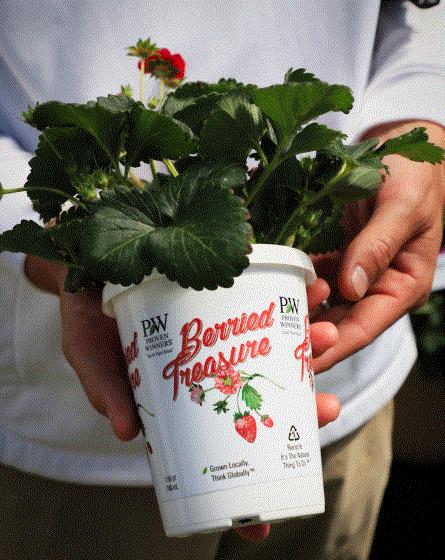
and Garden Gem and Garden Treasure tomatoes ...
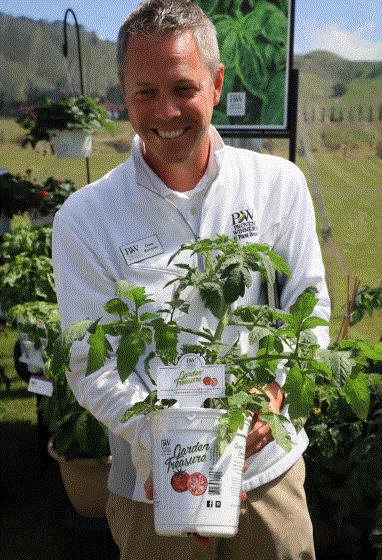
in addition to the Amazel Basil.
Going Retro?
At a recent party I attended, one discussion centered on how old-fashioned drinks like the Old Fashioned are all the rage again. Could it be happening to plants as well?
I ask that because we saw some newly released old-fashioned plants at a few stops during Trials this year. Take Benary, for instance. They had at least two oldies but goodies. The first is a platycodon called Popstar. It’s a whole new series, actually! Popstar has what they say is the most compact habit on the market, a tight flowering window and is a lovely indoor/outdoor plant. It’s available in Pink, Blue and White.
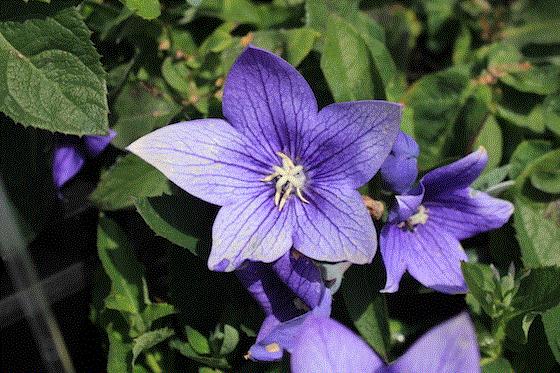
Lewisia is also on the old-fashioned side, I would say. Also on the indoor/outdoor list, Benary’s new Elise series has a large number of flowers and is heat and drought tolerant, making it a nice item for rock gardens. Comes in White, Ruby Red and a fun mix that includes yellows and oranges.
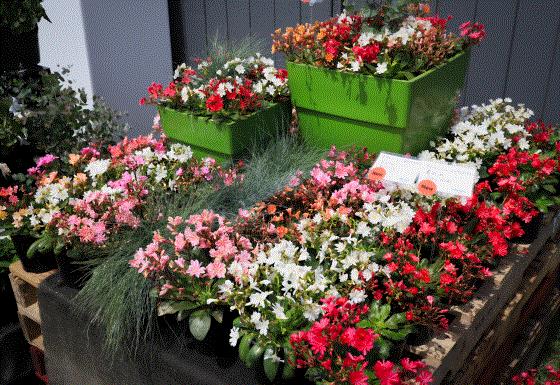
What do you say, is what’s old new again?
Mother’s Day
With Mother’s Day just 10 days away, we can expect this one to be a doozy, spending-wise. The National Retail Federation says spending on Mother's Day will reach $23.1 billion, the second highest in their survey history. Their survey results point to individuals spending an average of $180 on Mom’s special day. (I must be cheap—I gave my mom $25 to cover both her birthday and Mother’s Day!)
On the shopping list are the usual Mom favorites: jewelry (planned to be purchased by 34% of survey takers), brunch or dinner (55%), flowers (69%), gift cards (45%), clothing (36%), electronics (14%) and things such as spa visits (24%). Even gardening tools make an appearance on this list, bundled along with “housewares” and clocking in at 19%. “Gifts of experience,” such as a spa day or concert, will be given most often by people between the ages of 18-34.
My $25 gift to my mom was specifically for spring flowers, as it is meant to be each year. While we can’t compare to the experience of a Mother’s Day brunch, the advantage we have is that our gifts of flowers, color and decoration are the gifts that keep giving all season long. Brunch? Not so much.
What marketing message are you using to promote garden product purchases for Mother’s Day? Let me know—and if you feel it’s working—by dropping me a message HERE.

Speaking of Surveys …
The National Initiative for Consumer Horticulture (NICH) is asking industry folks to take a survey of their own. This one asks folks to rank six environmental objectives. The results of the survey will help the folks at NICH set priorities for research and educational funding, which they’ll set about doing at the upcoming NICH National Conference in Atlanta on June 27-29. You can take the 1-minute survey HERE.
Oh, and about that conference! You can get the skinny on it and register for the event HERE. Any and all segments and aspects of consumer horticulture are welcome. That means you!
Garden Grants Available
The National Garden Bureau is once again promoting the healing powers of plant-human interactions by offering grant monies to therapeutic gardens. Along with corporate sponsors Sakata Seed America and American Meadows, NGB will offer a total of $5,000 to be split among three therapeutic gardens in North America (that means you, too, Canada and Mexico!).
As someone who has been teaching gardening classes to folks living with mental illness, I know firsthand how gardening can benefit people, whether the person has a physical or mental issue impacting her life. Therapeutic gardens can take all forms—healing, enabling, rehabilitating and restorative—and they are so very needed in our communities.
I also know firsthand that funding is desperately needed for these gardens. These three grants will provide money that goes a very long way! If you run a therapeutic garden or know of one in your community (perhaps a therapeutic garden is a customer of yours?), you can find out the ELIGIBILITY REQUIREMENTS and then APPLY for the grants before the July 1 deadline.

Speaking of Monies …
Students! Don’t forget that SNA’s Sidney B. Meadows Scholarship Endowment Fund is accepting applications for some serious money. The Fund has 12 $1,500 scholarships available for eligible hort students in the 16 southern states.
The deadline for applying is May 27, so you better get on that APPLICATION PROCEDURE now. Scholarship recipients will be selected by August 1, just in time for the fall semester (whew!). And good luck!
If you have any comments on your season thus far, or have any additional questions, comments or suggestions, email them to me at ewells@ballpublishing.com.

Ellen Wells
Editor-at-Large
Green Profit
This week's BuZZ! was sent to 21,066 loyal readers!
If you're interested in advertising on BuZZ! contact Kim Brown ASAP!